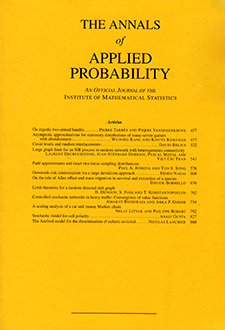Abstract
For sufficiently smooth targets of product form it is known that the variance of a single coordinate of the proposal in RWM (random walk Metropolis) and MALA (Metropolis adjusted Langevin algorithm) should optimally scale as and as with dimension n, and that the acceptance rates should be tuned to 0.234 and 0.574. We establish counterexamples to demonstrate that smoothness assumptions of the order of for RWM and for MALA are indeed required if these scaling rates are to hold. The counterexamples identify classes of marginal targets for which these guidelines are violated, obtained by perturbing a standard normal density (at the level of the potential for RWM and the second derivative of the potential for MALA) using roughness generated by a path of fractional Brownian motion with Hurst exponent H. For such targets there is strong evidence that RWM and MALA proposal variances should optimally be scaled as and as and will then obey anomalous acceptance rate guidelines. Useful heuristics resulting from this theory are discussed. The paper develops a framework capable of tackling optimal scaling results for quite general Metropolis–Hastings algorithms (possibly depending on a random environment).
Citation
Jure Vogrinc. Wilfrid S. Kendall. "Counterexamples for optimal scaling of Metropolis–Hastings chains with rough target densities." Ann. Appl. Probab. 31 (2) 972 - 1019, April 2021. https://doi.org/10.1214/20-AAP1612
Information





